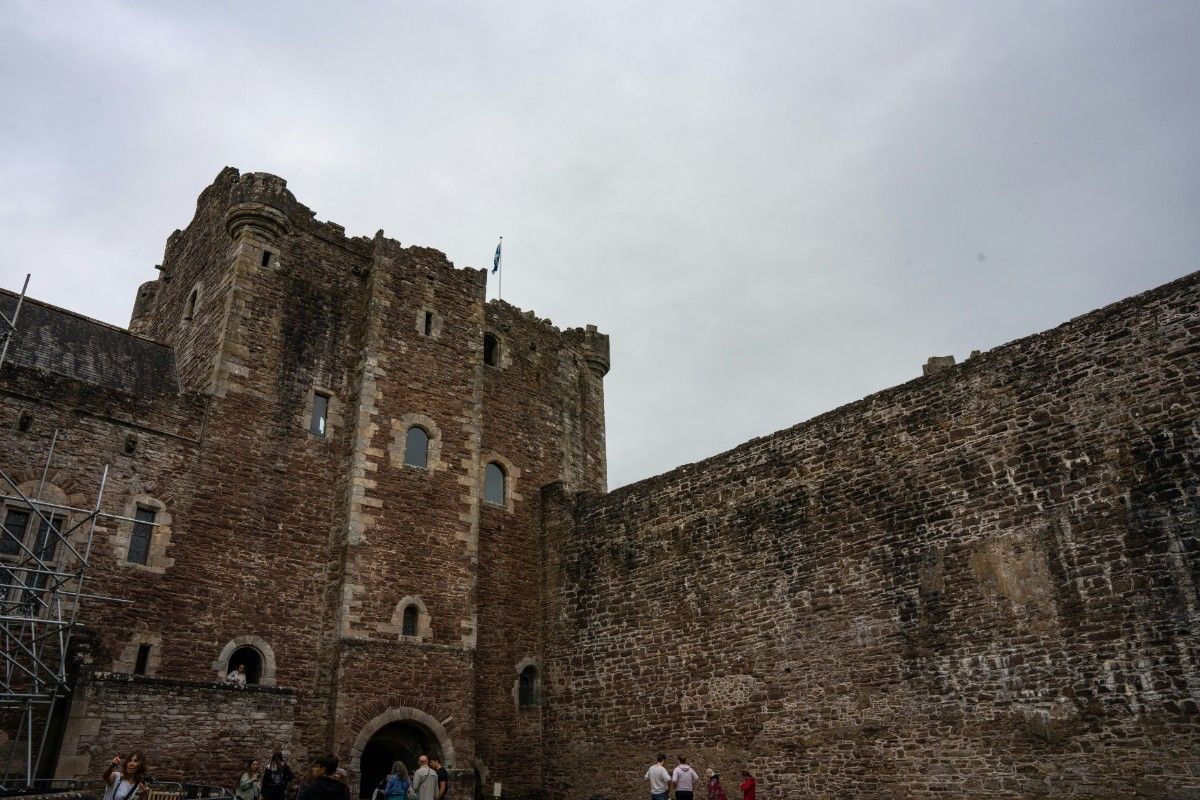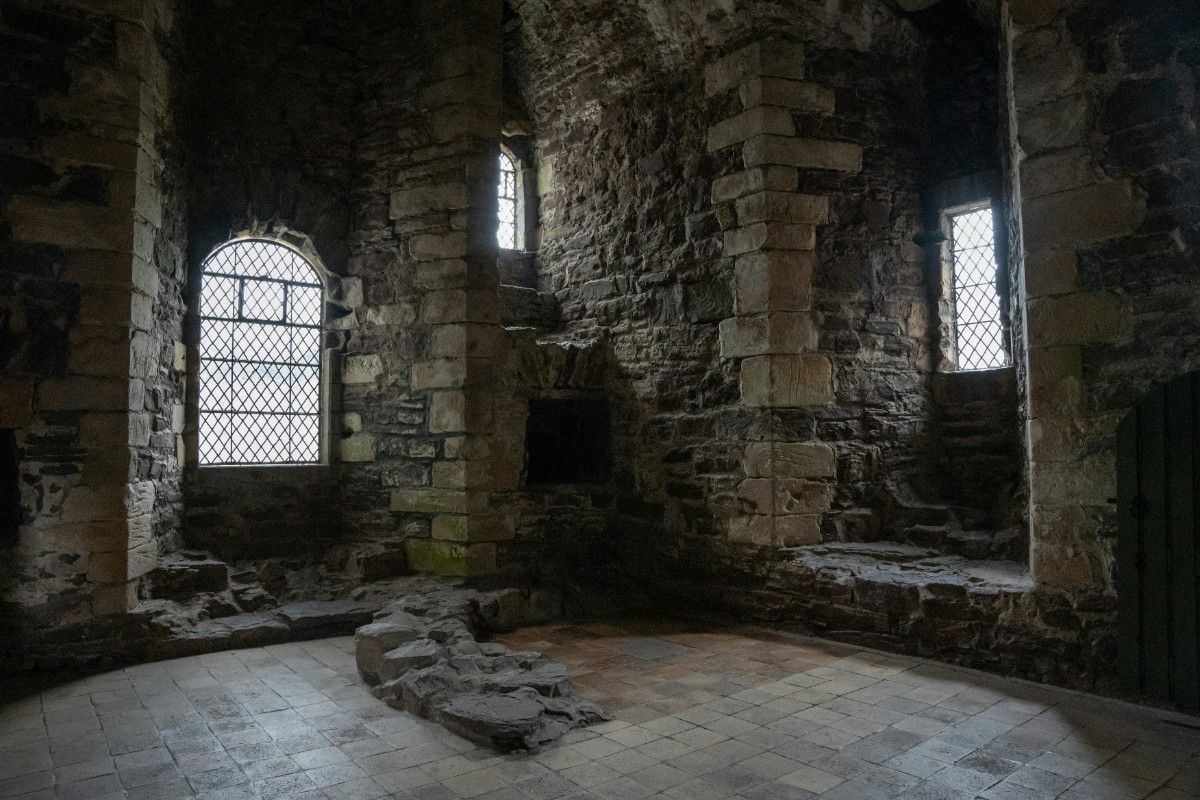The Historical Significance of Doune Castle: From Medieval Stronghold to Modern Marvel
Early Origins and Construction
The story of Doune Castle begins long before its stone walls rose against the Scottish sky. Archaeological evidence reveals human settlement on Castle Hill dating back to the Iron Age, with wooden fortifications predating the current structure. The castle we see today emerged in the late 14th century under the direction of Robert Stewart, Duke of Albany and grandson of Robert the Bruce. The strategic placement of Castle Doune demonstrated remarkable foresight, as it controlled crucial crossing points over the River Teith and commanded expansive views across Stirlingshire.
The construction methods employed at Doune Castle Scotland exemplify the pinnacle of medieval Scottish engineering. Master masons carefully selected local sandstone, cutting and placing each block to create walls up to 2.4 metres thick. The great hall's construction particularly showcases their expertise, with its open timber roof structure spanning an impressive 20 metres by 8 metres. The builders incorporated sophisticated defensive features, including murder holes, arrow loops, and a complex gatehouse system that represented the height of 14th-century military architecture.
Medieval Life and Power
Within these formidable walls, Doune Castle functioned as both military stronghold and aristocratic residence. The Duke of Albany effectively ruled Scotland from this location between 1388 and 1420, making it the centre of Scottish political power. The castle's domestic arrangements reflect this dual purpose, with the great hall serving as both administrative centre and feasting space. The kitchen's massive fireplace, capable of roasting multiple animals simultaneously, speaks to the scale of hospitality expected of a royal residence.
The castle's role in medieval Scottish life extended beyond military and political functions. It served as a cultural centre, hosting gatherings of nobles, poets, and musicians. The musicians' gallery in the great hall, an architectural feature rarely preserved in Scottish castles, provides tangible evidence of these cultural activities. The castle's wine cellar and storage facilities indicate extensive trade networks, while the private chambers showcase the luxury expected by medieval Scottish nobility.
Military History and Conflict
Throughout its history, Doune Castle played crucial roles in Scotland's military conflicts. During the Wars of Independence, its strategic position near Stirling made it a key defensive point. The castle's military significance peaked during the Jacobite Rising of 1745, when Bonnie Prince Charlie's forces occupied the fortress. They transformed the great hall into a prison for government troops, adding another layer to the castle's complex history.
The castle's defensive features underwent several modifications during this period. The original arrow loops were adapted for musket fire, while the battlements were reinforced to withstand artillery. These adaptations demonstrate how medieval fortifications evolved to meet changing military technologies, though Doune Castle remarkably retained much of its original 14th-century character throughout these modifications.
From Ruin to Restoration: The Modern Renaissance of Doune Castle
Early Conservation Efforts
By the early 19th century, Doune Castle faced serious deterioration. Decades of neglect following the Jacobite period had left the roof partially collapsed and vegetation growing unchecked on the walls. The first systematic conservation efforts began in the 1880s under the 14th Earl of Moray. These early restoration works focused primarily on stabilising the structure and preventing further decay, while maintaining the castle's authentic medieval character.
Victorian-era architects meticulously documented existing features before beginning any restoration work. Their detailed surveys and drawings provide invaluable information about the castle's original construction and subsequent modifications. These early conservators employed traditional building techniques wherever possible, ensuring their interventions remained true to the castle's medieval origins.
Modern Management and Preservation
Today, Historic Environment Scotland maintains Doune Castle, implementing comprehensive conservation programmes that balance preservation with public access. Modern conservation techniques, including 3D scanning and environmental monitoring, help identify and address potential issues before they become serious problems. Regular maintenance focuses on stone conservation, drainage improvements, and structural stability monitoring.
The introduction of visitor facilities at Doune Castle Stirling exemplifies modern heritage management practices. Careful modifications improve accessibility while respecting the historic fabric. Pathways have been upgraded, viewing platforms installed, and information panels strategically placed to enhance visitor understanding. The visitor centre provides essential amenities while minimising impact on the historic structure.
Archaeological Discoveries and Research
Recent archaeological investigations at Castle Hill Doune continue to reveal new insights into the castle's history. Excavations have uncovered evidence of earlier structures, medieval artifacts, and details about the castle's construction methods. These findings help archaeologists and historians better understand the development of Scottish castle architecture and medieval life.
Ground-penetrating radar surveys have revealed previously unknown features beneath the castle courtyard, including evidence of earlier buildings and defensive structures. Analysis of recovered materials provides information about medieval diet, trade connections, and daily life within the castle. This ongoing research ensures that our understanding of Doune Castle continues to evolve, adding new chapters to its remarkable story.
From Screen to Reality: Doune Castle's Popular Culture Legacy
The Monty Python Connection
The enduring connection between Castle Doune and Monty Python began in 1974 when the comedy troupe selected the fortress as their primary filming location for "Monty Python and the Holy Grail". The castle's remarkable state of preservation and versatile architecture made it the perfect backdrop for multiple fictional castles in the film, including the iconic Camelot. Doune Castle Monty Python scenes have become legendary among fans, with the great hall, courtyard, and exterior walls featuring prominently throughout the movie.
This cinematic connection transformed the castle's cultural significance. The audio guide, narrated by Monty Python's Terry Jones, expertly blends historical facts with entertaining anecdotes from the film's production. The castle's gift shop embraces this heritage, selling coconut shells in reference to the film's famous horse-hoof sound effects. Special events throughout the year celebrate this connection, including fan gatherings where visitors recreate beloved scenes and quote memorable lines beneath the same stones where they were originally filmed.
Television Stardom
The success of Doune Castle’s Outlander appearances has introduced the fortress to a new generation of admirers. Serving as Castle Leoch, the seat of Clan MacKenzie in the hit series, the castle's authentic medieval atmosphere provides the perfect backdrop for the show's 18th-century scenes. The production team's careful use of the castle's original features, including the great hall and courtyard, demonstrates how well the authentic medieval architecture translates to historical drama.
Doune Castle and Game of Thrones also gained fame through its appearance as Winterfell in the series pilot. Though the production later moved to Northern Ireland, this early appearance helped establish the visual style that would define the show's aesthetic. The castle's imposing gatehouse and robust walls perfectly embodied the stark, defensive architecture associated with the North in George R.R. Martin's world.
Impact on Heritage Tourism
The castle's screen appearances have significantly influenced Scottish heritage tourism. Visitor numbers have surged, particularly following the success of Outlander, with fans travelling from across the globe to experience the real-world setting of their favourite shows. This increased visibility has generated substantial economic benefits for the local community and helped fund ongoing preservation efforts through increased ticket sales and merchandise revenue.
The castle's popularity has led to the development of specialist tours catering to film and television enthusiasts. These tours complement traditional historical visits by highlighting filming locations while also educating visitors about the castle's authentic medieval heritage. This blend of entertainment and education has proved particularly successful in engaging younger visitors with Scottish history and architecture.
A Comprehensive Guide to Visiting Doune Castle
Planning Your Visit
Accessing Doune Castle Scotland is straightforward, with the fortress located approximately eight miles northwest of Stirling. Visitors travelling by car will find ample parking at the base of Castle Hill, while regular bus services connect the site with major Scottish cities. Doune Castle tickets can be purchased online through Historic Environment Scotland's website or at the visitor centre, with discounts available for advance bookings and group visits.
The best time to visit depends on personal preferences and interests. Summer months offer longer daylight hours and generally better weather, though the site can be busier. Spring and autumn provide excellent photography opportunities with dramatic skies and changing colours, while winter visits offer a more atmospheric experience with fewer crowds. The castle operates year-round, though opening hours vary seasonally.
Exploring the Castle
A visit to Castle Hill Doune reveals the remarkable preservation of medieval Scottish architecture. The tour typically begins at the impressive gatehouse, which rises 29 metres and provides insights into medieval defensive engineering. Moving through the castle, visitors can explore the great hall, kitchen, castle chambers, and battlements, each area offering unique perspectives on medieval life and architecture.
The castle's layout encourages natural exploration, with each space flowing logically into the next. The great hall, with its soaring ceiling and massive fireplace, particularly impresses visitors with its scale and architectural sophistication. The kitchen complex demonstrates medieval culinary practices, while the Duke's Hall provides insights into private noble life. From the battlements, visitors can appreciate the castle's strategic position and enjoy panoramic views across the Scottish landscape.
Practical Information and Facilities
Historic Environment Scotland maintains excellent facilities at Doune Castle Stirling. The visitor centre provides essential amenities, including restrooms, a gift shop, and a small refreshment area. The shop stocks a carefully curated selection of books, traditional Scottish crafts, and themed merchandise relating to the castle's various film and television appearances.
Accessibility has been thoughtfully considered, though some limitations exist due to the castle's medieval architecture. The ground floor areas, including the courtyard and great hall, are accessible to most visitors. Upper floors require climbing narrow spiral staircases, but virtual tours are available for those unable to access these areas. Photography is permitted throughout the castle, though tripods may require prior permission. Guided tours, included with standard admission, offer expert insights into both the castle's historical significance and its modern media connections.
Related Articles

Let us know you agree to cookies
We use marketing, analytical and functional cookies as well as similar technologies to give you the best experience. Third parties, including social media platforms, often place tracking cookies on our site to show you personalised adverts outside of our website.
We store your cookie preferences for two years and you can edit your preferences via ‘manage cookies’ or through the cookie policy at the bottom of every page. For more information, please see our cookie policy.






